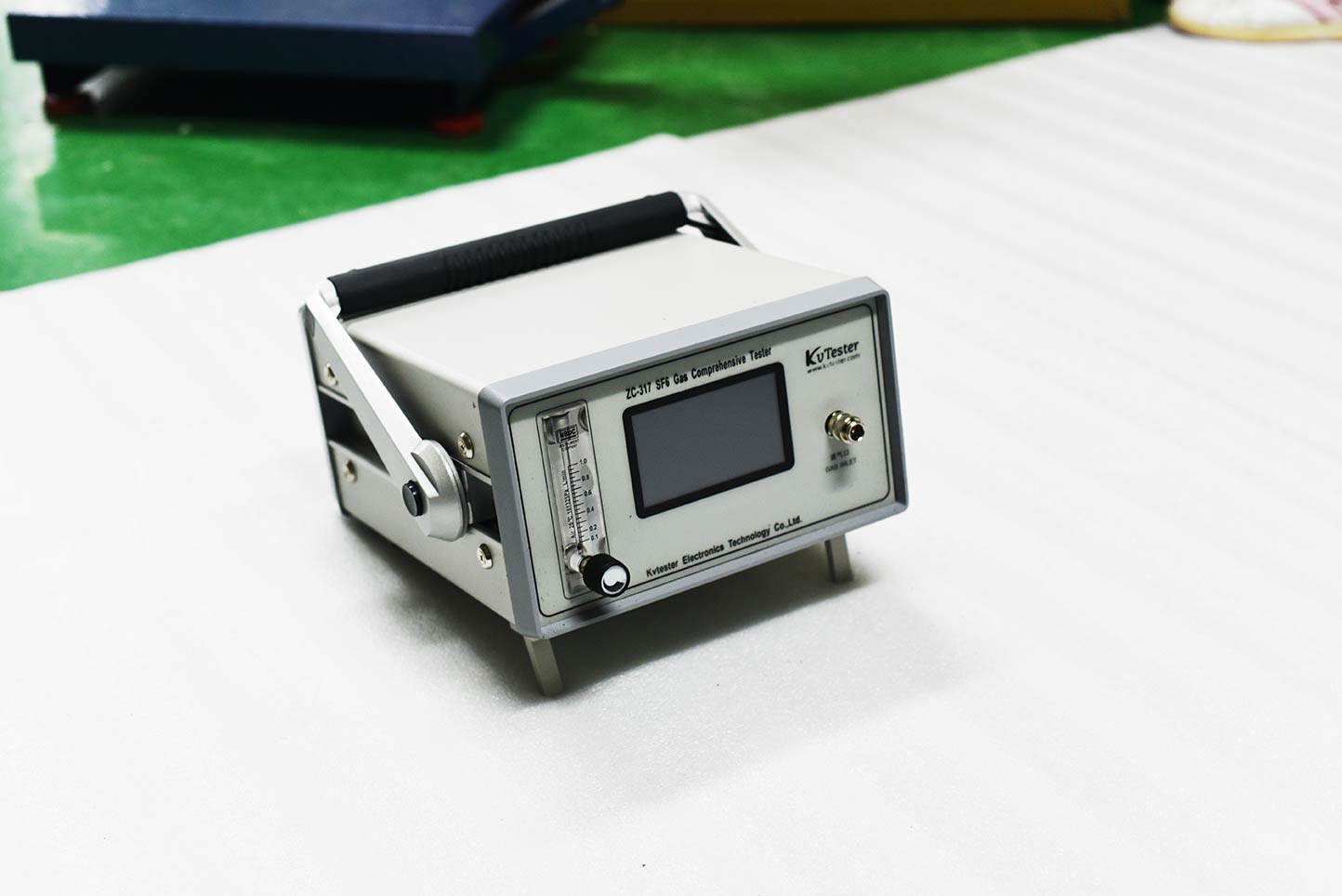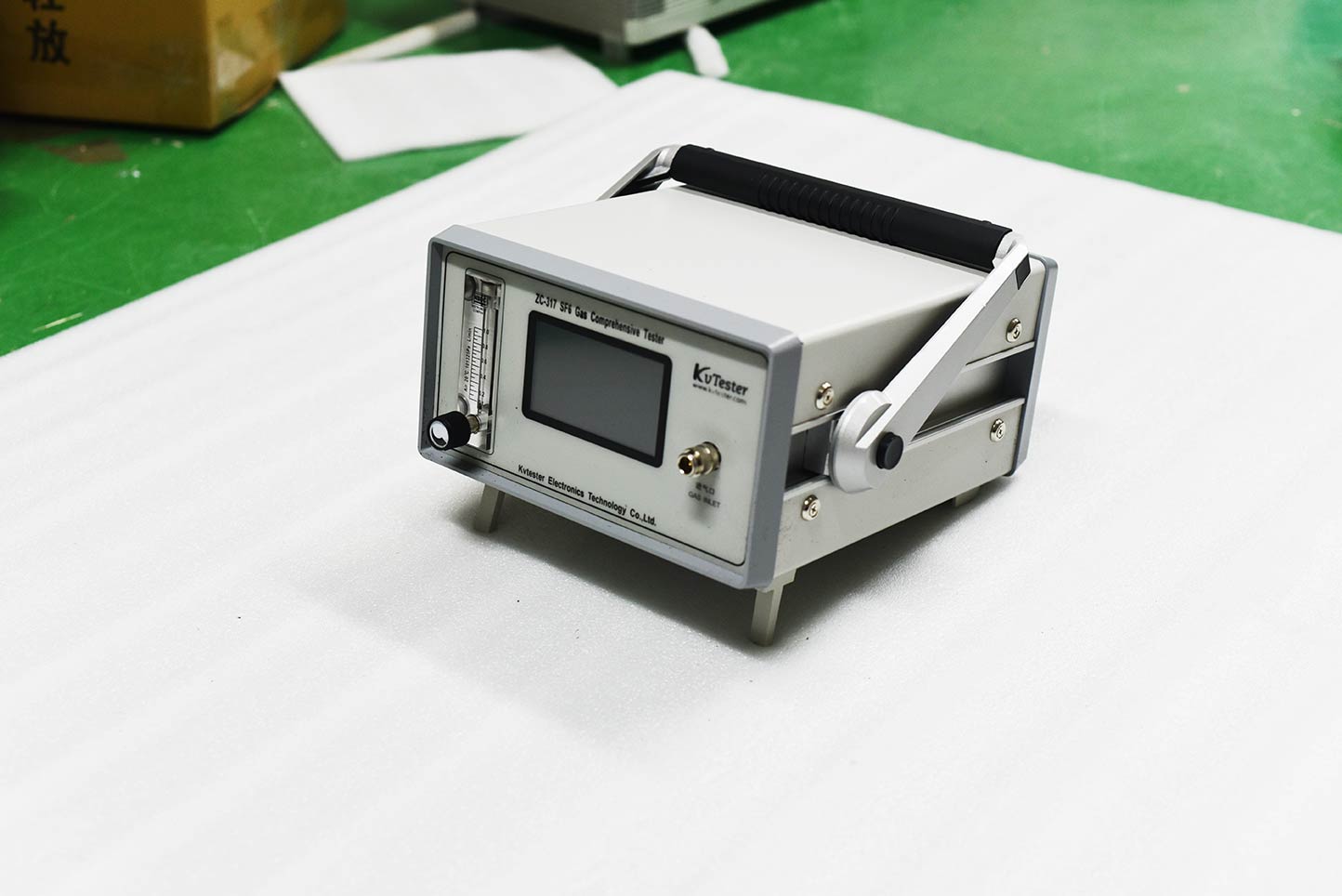SF6 gas has excellent insulation performance. In a relatively uniform electric field, its insulation strength is about 2-3 times that of air. At 3 atmospheric pressures, its insulation strength can reach the level of insulating oil. The factors that affect its insulation strength include:
1. Uniformity of electric field
The uniformity of the electric field has a greater impact on the breakdown voltage of SF6 gas gaps than air. Under extremely non-uniform electric fields, the breakdown voltage of SF6 gap will be three times lower than that of air. As the degree of electric field non-uniformity increases, the difference between SF6 gap breakdown voltage and air gap breakdown voltage gradually decreases. In SF6 electrical structures, poor design may result in extremely uneven electric fields, therefore, this phenomenon should be avoided during design. In a slightly non-uniform electric field, as the distance between the electric fields increases, the breakdown voltage gradually slows down and a phenomenon of voltage saturation occurs. Therefore, the insulation structure design of SF6 electrical appliances emphasizes more on the uniformity of the structural electric field distribution, rather than simply increasing the gap to improve the withstand voltage.
2. Corona initiation voltage and interpole breakdown voltage
SF6 has the negative electricity of capturing free electrons. When the free electron density in the electric field is not too high, SF6 can indeed inhibit the collision dissociation of the gap, thus improving the initial voltage of partial discharge (compared with the same air gap). However, when the electric field reaches the partial discharge value, on the one hand, due to the large molecular diameter and molecular weight of SF6 gas, the ions generated by ionization have low movement speed and mobility, and the space charges at the rod end are dense and difficult to spread outward. The corona layer generated by partial discharge plays a shielding role on the electrode, and partial discharge is easy to develop into gap penetration discharge. On the other hand, when partial discharge is generated in the electric field, the free electrons in space have obtained enough energy in the electric field, and the affinity of SF6 molecule for electrons is not enough to attract the high-energy free electrons, but it will be ionized by the impact of high-energy electrons, making the neutral SF6 release its own electrons. The negative ion SF6 that has absorbed electrons will also be forced to release the adsorbed electrons and the negative ion SF6 that has only electrons will also be forced to release the adsorbed electrons and the electrons on its own free electron orbit, forming an electron avalanche, which will quickly lead to the characteristic that the gap breakdown voltage is very close to the characteristic that the breakdown voltage of the electrode in the extremely uneven electric field in the air is much higher than the initial voltage of partial discharge, The insulation performance of SF6 gaps in extremely uneven electric fields will be similar to that of air.

3. Polarity effect of SF6 insulation
In SF6 uniform electric field, due to the complete symmetry of the electric field distribution between the two electrodes, there is no polarity effect, that is, the breakdown voltage is the same when applying positive or negative voltage. In uneven and extremely uneven electric fields, the breakdown voltage of the negative polarity is higher than that of the positive polarity. Therefore, the impact insulation level in SF6 electrical appliances is usually determined by the negative polarity test voltage value. The movement of space charges in the discharge gap causes the polarity effect of SF6 discharge.
When the upper electrode is negative and the electric field near the surface of the upper sphere reaches a certain value, the space near the lowest point of the upper sphere will first ionize, and electrons will move downwards away from the upper electrode. During the movement, the SF6 gas in the gap will free and release electrons; The space positive charge left near the upper electrode generates a higher potential gradient on the surface of the upper sphere, causing more electrons to be emitted from the surface, thereby accelerating the dissociation of the gap and reducing the negative polarity breakdown voltage. When the upper ball is the positive electrode, the first free electrons directly enter the upper electrode and do not enter the gap space to induce SF6 to release electrons; The positive charge left near the upper ball can further weaken the electric field near the positive electrode, suppress the emission of electrons from the upper ball, and make the gap free less than when it is negative, so the breakdown voltage of the positive electrode is higher than that of the negative electrode.
4. Surface State Effects of SF6 Insulated Electrodes
The initial voltage of electrode corona in SF6 is mainly influenced by the surface state of the electrode, followed by the influence of electrode distance. The protruding parts on the surface of electrical product parts have concentrated field strength and low corona initiation voltage. Therefore, the gap breakdown voltage decreases with the increase of surface roughness Ra. As the SF6 gas pressure increases, the influence of surface roughness Ra on Ub becomes more prominent, and the surface shape of SF6 electrical electrodes also has a significant impact on the corona initiation voltage. The sharp angle reduces the breakdown voltage of the gap, and under the same spacing d and pressure p conditions, the smaller the curvature radius r of the sharp angle, the lower the breakdown voltage Ub. The greater the pressure, the greater the adverse effect of the sharp angle on discharge.

5. The Effect of Conductive Particles on SF6 Insulation
The phenomenon of conductive particles adhering to the electrode surface is common, such as metal residues after cutting, residual metal powder on the electrode surface after sanding, etc. that are not cleaned up, metal powder that is worn off after several opening and closing operations of the product during operation, and metal powder that is not cleaned up during maintenance, all of which will form protruding small discharge tips on the electrode surface. This is equivalent to increasing the roughness of the electrode surface and reducing the breakdown voltage. In addition, particles will move under the action of an inter electrode electric field, or accumulate to form discharge tips, or arrange into lines to shorten the distance between electrodes, ultimately leading to a decrease in breakdown voltage. If there are large protruding sharp corners on the surface of the electrode, even under impulse voltage, its breakdown value will significantly decrease.
6. The Influence of Voltage Waveform on SF6 Insulation
The corona shielding effect of SF6 is weak in slightly non-uniform electric fields, so the discharge voltage decreases with the increase of wave head time. The negative polarity standard lightning fluctuation 50% of the discharge voltage is higher than the operating wave and higher than the power frequency breakdown voltage. The ratio of 50% lightning impulse breakdown voltage to the peak power frequency breakdown voltage is called the impulse coefficient. In a slightly uneven electric field, the positive polarity impact coefficient is between 1.2 and 1.3, which is higher than the negative polarity impact coefficient. Due to the ratio of the lightning impulse withstand voltage to the peak power frequency withstand voltage specified for general high-voltage electrical equipment being greater than 1.5, the insulation size of SF6 electrical appliances is determined by the negative lightning impulse withstand voltage.
7. The influence of electric field distribution
The magnitude of the surface flashover voltage of insulating components in SF6 is of course related to the flashover distance along the surface, but at the same SF6 gas pressure, it is more constrained by the uniformity of the electric field distribution of the insulating components. If the electric field is extremely uneven, the surface flashover voltage quickly saturates with increasing distance. Similar to the gap discharge characteristics of SF6 gas, the negative polarity impact flashover voltage is higher than the positive polarity. In a slightly non-uniform electric field, when the electrode spacing reaches a large value, saturation of the flashover voltage may also occur, but at this point, the negative polarity impact flashover voltage is lower than the positive polarity. The effect and possibility of increasing the pressure of SF6 gas are limited. The most effective way for particles to significantly increase the flashover voltage is to improve the electric field distribution of the insulation rod and reduce the maximum working field strength.

ZC-317 SF6 gas comprehensive test instrument is a set of SF6 micro water instrument, SF6 purity instrument and SF6 decomposition product analyzer. The functions that can be realized by three instruments are centralized in one instrument. One on-site measurement can complete three indicators detection, greatly saving the gas in the equipment, saving 2 / 3 of the gas consumption in one measurement, reducing the user's workload and improving the work efficiency.
Kvtester Electronics Technology Co.,Ltd. is a high-tech enterprise specializing in power testing, testing, research and development, production, and sales of testing equipment. It has been engaged in the electrical testing industry for many years, and its products are of high quality. We welcome customers to come and purchase.







